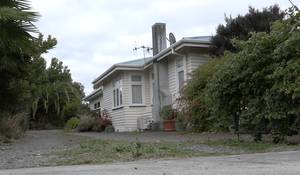初等・中等教育機関は、政府の見直しにより、年間2,000万ドル以上の授業料に値する外国人入学者数が脅かされるのではないかと懸念しています。
業界指導者らは、この見直しはこの上なく驚くことであり、政府は何を変えたいのか説明していないと述べました。
初等・中等学校は、ニュージーランドの国際教育部門の中で、小さいながらも成長している組織です。
2019年には、324のプライマリー、インターメディエイトスクール(小学校・中学校に相当)に5225人の子どもたちが入学し、その家族は2400万ドルの授業料を支払いました。
数週間だけ学校に通う子もいれば、親や法的保護者と一緒に1年中滞在する子もおり、10歳以上であればホームステイ先の家族と一緒に暮らすことも許されています。
タウランガにあるピランズ・ポイント・スクール(Pillans Point School)の校長、マット・シメオン氏は、見直しの発表に人々は不安を感じていると語りました。
「ちょっとしたショックを受けています。「ちょっとしたショックを受けています。4、5週間前から噂は耳にしていましたが、実際に書面で初等・中等教育における国際教育の提供を見直すと発表されたことで、何が起こっているのか、なぜなのか、多くの人が疑問に思っています」と彼は述べています。
校長たちは、教育省がこのような幼い子どもたちを入学させることを好ましく思っていないのではないかと思っていましたが、教育省がどのような変更を望んでいるのか分からないので、それを伝える必要があると語りました。
「年齢の変更を考えているのか、年齢制限を考えているのか、それとも全く行わないことを考えているのか、それは大きな影響を与えるからです。」
シメオン氏によると、学校は生徒から得た利益を教師の補助員の増員に充てており、入学者数の減少は雇用の喪失を招くとのこと。
政府の規則では、10歳未満の外国人留学生は、法的な保護者や親と一緒に生活しなければならないことになっています。
学校国際教育ビジネス協会(Schools International Education Business Association)のJohn van der Zwan氏は、これにより子どもたちへのケアが十分に行き届いており、このセクターの小学校は他の学校よりもパンデミックをうまく乗り切っていると指摘しました。
子供に英語教育を受けさせたいという家庭が世界的に増えており、ニュージーランドには特に中国や韓国からの子供たちが集まってきているといいます。
また、多くの子供たちが中学・高校・大学へと進学しており、これはニュージーランドにとって非常に価値のあることだと述べています。
Van der Zwan氏は、政府の見直しはまったくの驚きだったと語りました。
彼は「これは私たちにとって青天の霹靂であり、予想していたことではありません」と語っています。
パーマストンノースにあるワカロンゴ・スクールの Jaco Broodryk校長は、同校には現在3人の外国人留学生がいるが、例年であれば10人はいるだろうと述べました。
彼は、留学生の受け入れは、学校の生徒が文化的な能力を身につけるのに役立ち、また、この制度の経済的なメリットは、より広いコミュニティにまで及ぶと述べます。
Broodryk氏によると、ニュージーランドの外国人入学者数の競争相手であるオーストラリアとカナダは、初等教育の外国人学生の入学を認めておらず、それがニュージーランドの優位性につながっているといいます。
また、初等学校で過ごした留学生は、中等学校での学習に適した準備をしていると述べています。
クリス・ヒプキンス教育相は、この見直しはニュージーランドの国際教育部門を改善するための動きの一環であると述べました。
ヒプキンス教育相によると、「国境規制がされている間に、国際教育戦略で示された『高品質・高価値』の戦略的転換を加速し、定着させる機会がある」とのことです。
「これには、初等・中等レベルの留学生に対する現行の政策設定が目的に合っているかどうかの見直しも含まれます。
「教育省は現在、この問題に関するアドバイスを作成しており、2021年後半の正式な公開協議に向けて、可能性のある選択肢について教育部門と協力していく予定です。
「初等・中等レベルの留学生に影響を与える政策の変更については、まだ決定されていません。」
情報元:RNZニュース






























































